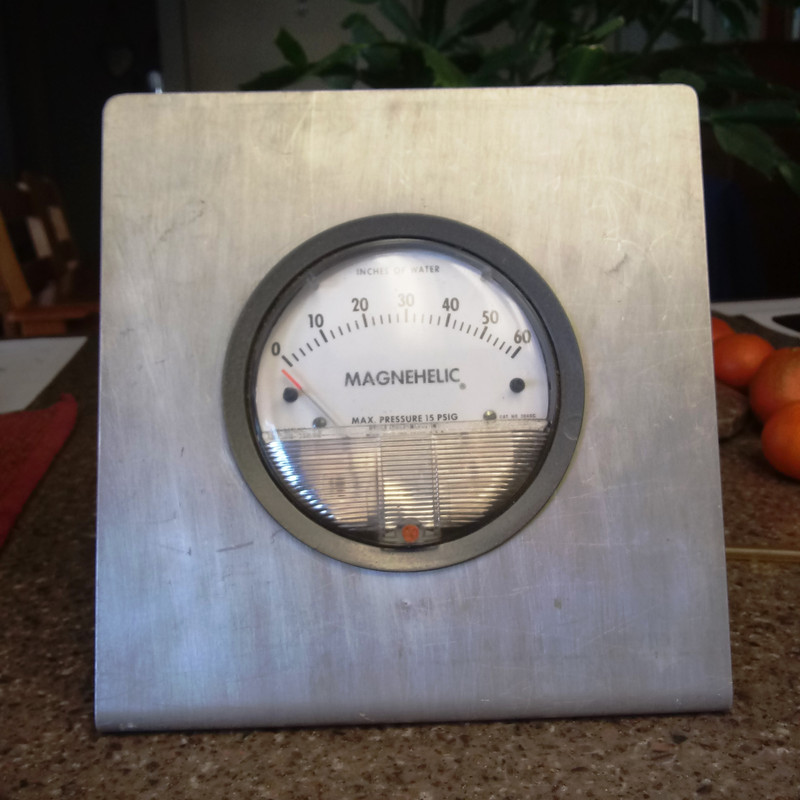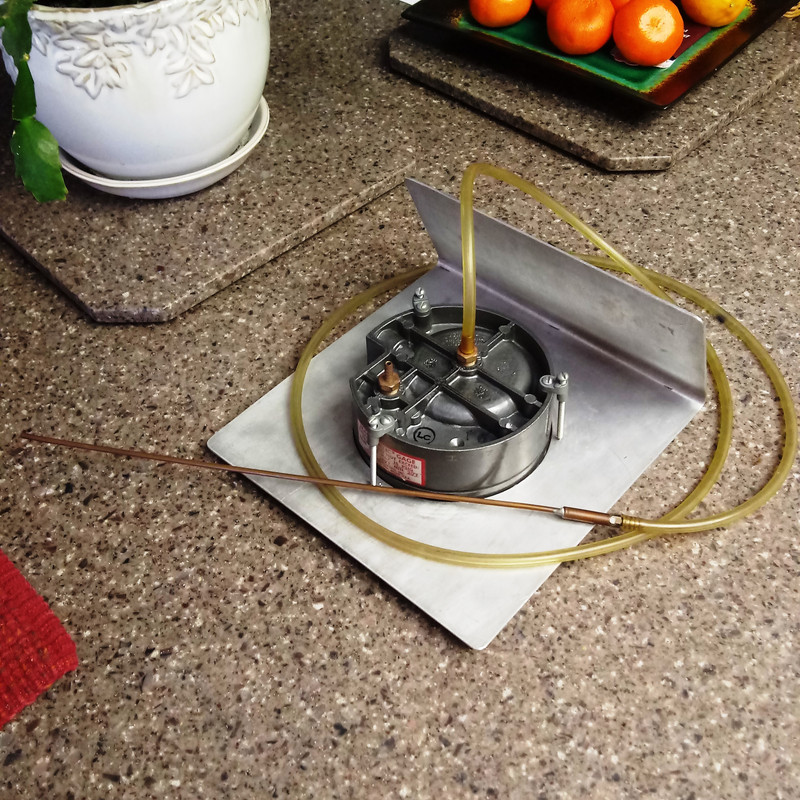Using a differential pressure gauge to sniff out velocity
Posted: Sat Feb 06, 2021 2:05 pm
Why? Because I find the stabilized output from my velocity probe to be too slow and I didn't want to spend the money to have an exhaust probe. Also the sniffer fits to areas the velocity probe cannot. The soft copper construction allows its shape to be modified repeatedly and the smaller profile provides less disturbance of the port flow.
The gauge I'm using is a Magnehelic, 0-60 inches of water pressure gauge made by Dwyer. It is somewhat limited in resolution. I have yet to see pressures above 45" H2O while testing at 28" H2O. You should consider what test pressure you will be working at before purchasing. The gauges can be found used on Ebay for $30-$50.
The sniffer is just 1/16" copper tubing soldered to 1/8" copper tubing with a 1/8 brass hose barb. The connection between the sniffer and gauge is 1/8" polyurethane tubing.The system can work for both Intake and Exhaust velocity evaluation. You need to switch the hose connection around on the gauge for exhaust testing. One side is always open to ambient pressure. If I ever find a proper light duty QD, I may go that route.
To calibrate the equation output, you need a velocity probe or you can trust my set up which was done at 28" H2O.
You adjust the Compensation Coefficient to reflect the same velocity output from the velocity probe. I do this in the vena contracta of the calibration orifice used during bench set up at 28" H2O.
Some pictures of what it looks like:


Picture of the spreadsheet:

If you have any questions, I will attempt to respond.
Paul
The gauge I'm using is a Magnehelic, 0-60 inches of water pressure gauge made by Dwyer. It is somewhat limited in resolution. I have yet to see pressures above 45" H2O while testing at 28" H2O. You should consider what test pressure you will be working at before purchasing. The gauges can be found used on Ebay for $30-$50.
The sniffer is just 1/16" copper tubing soldered to 1/8" copper tubing with a 1/8 brass hose barb. The connection between the sniffer and gauge is 1/8" polyurethane tubing.The system can work for both Intake and Exhaust velocity evaluation. You need to switch the hose connection around on the gauge for exhaust testing. One side is always open to ambient pressure. If I ever find a proper light duty QD, I may go that route.
To calibrate the equation output, you need a velocity probe or you can trust my set up which was done at 28" H2O.
You adjust the Compensation Coefficient to reflect the same velocity output from the velocity probe. I do this in the vena contracta of the calibration orifice used during bench set up at 28" H2O.
Some pictures of what it looks like:


Picture of the spreadsheet:

If you have any questions, I will attempt to respond.
Paul